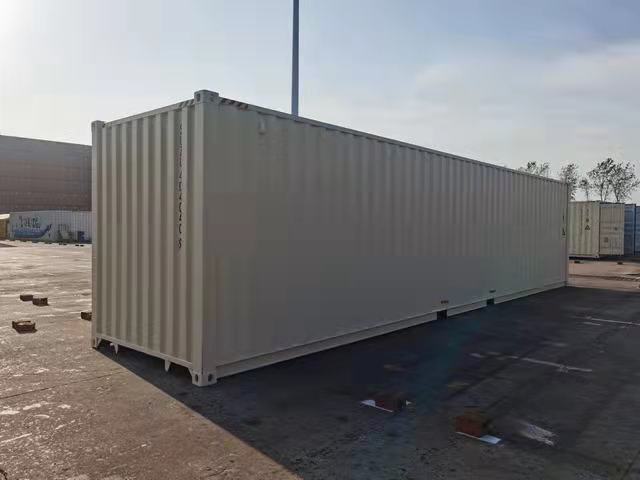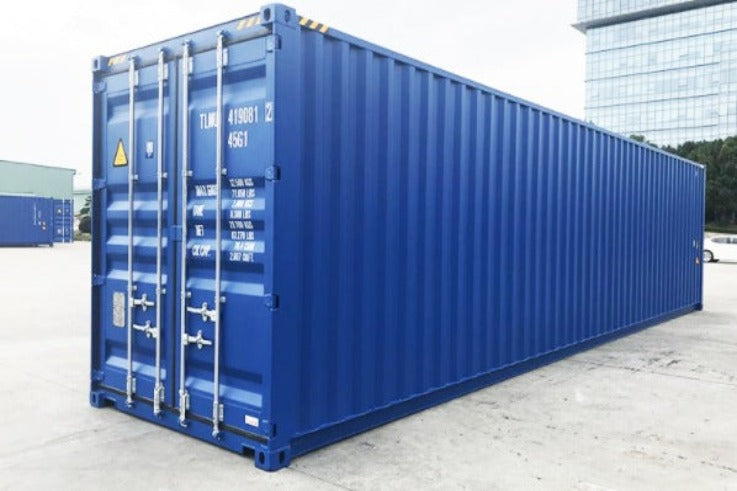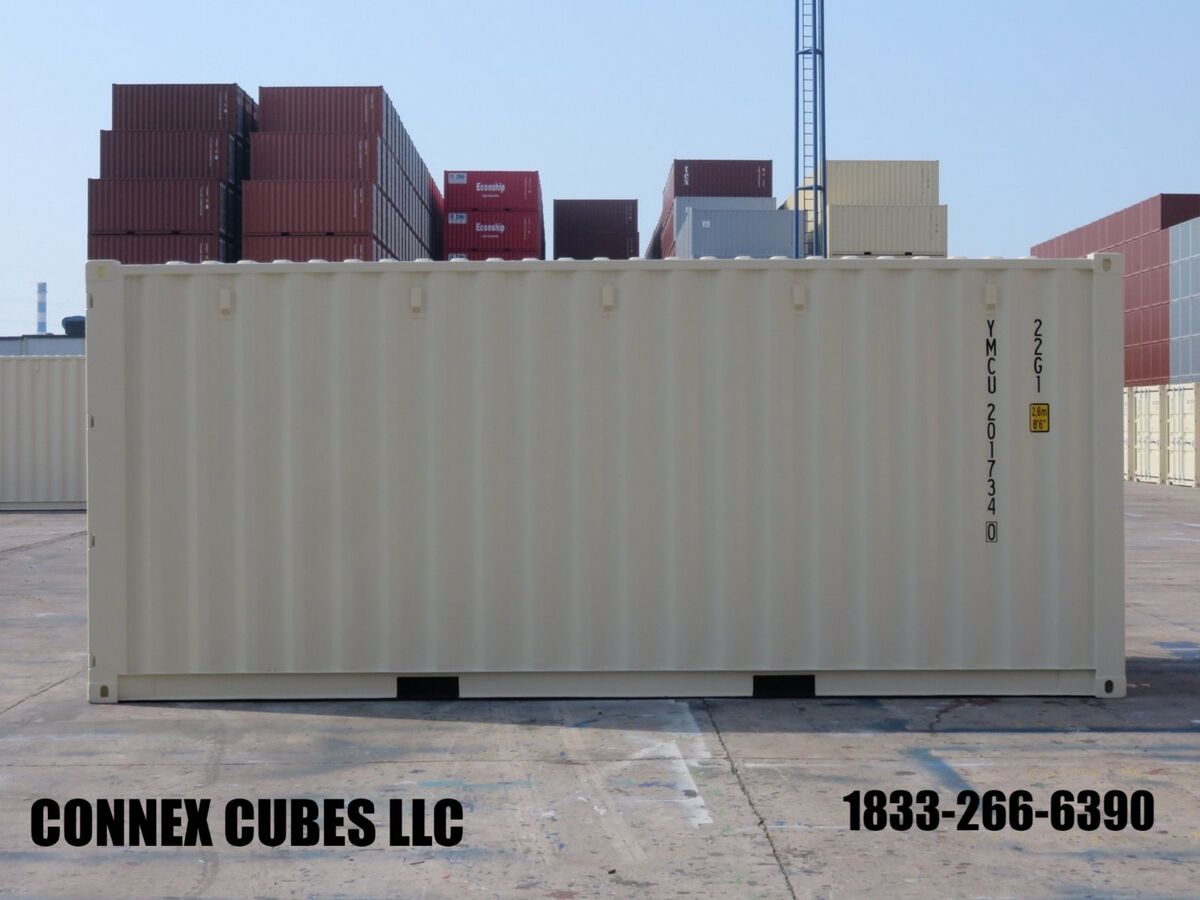The Ultimate Overview to Picking the Right Shipping Container for Your Demands
When it concerns choosing the right shipping container, recognizing your particular demands is necessary. You'll wish to take right into account factors like size, kind, and material to ensure you make the most effective choice. From conventional dimensions to specialized options, there's a whole lot to check out. And also, budgeting for both the container and any alterations can make a large difference. Let's damage down the vital aspects to assist you discover the excellent fit for your requirements.
Comprehending Delivery Container Sizes
When you're picking a shipping container, understanding the different dimensions readily available is essential for making the ideal choice. Delivering containers typically come in conventional sizes of 20 and 40 feet, however you'll additionally locate various other measurements. Recognizing the size you need depends on what you plan to store or transport.If you're moving smaller items, a 20-foot container could be optimal, while bigger deliveries often require a 40-foot container. The elevation can likewise vary; high dice containers use extra vertical room, which can be valuable for taller goods.Before determining, gauge your freight, and think about exactly how much space you'll require for packing and unloading. Constantly aspect in prospective future demands-- going with a slightly larger container might save you headache down the line. Eventually, choosing the appropriate size will improve efficiency and ensure your items are safe and secure during transportation
Kinds of Shipping Containers Available
There are a number of types of delivery containers available, each made for particular purposes and cargo demands. The common dry container is functional, ideal for basic cargo. If you're delivering disposable items, think about a chilled container, which preserves a regulated temperature. For large items, high cube containers supply additional height, fitting taller loads.If you need to move hefty machinery or devices, level rack containers provide a tough base without wall surfaces. Meanwhile, open-top containers enable simple loading of high freight, with a removable tarpaulin covering for security. If you're looking for adaptability, consider a retractable container that can be easily kept when not in use.Lastly, specialized containers like tank containers are utilized for liquids, while vented containers are developed for bulk cargo that needs ventilation. Recognizing your freight kind will aid you choose the ideal container to meet your shipping needs efficiently.
Product Factors To Consider for Sturdiness
When choosing a delivery container, the product plays an essential role in its sturdiness. You'll intend to consider the advantages of steel versus light weight aluminum, particularly regarding corrosion resistance. Understanding these elements can help you make a much more enlightened selection for your delivery requires.
Steel vs. Aluminum Containers
Just how do you select between steel and light weight aluminum containers for your shipping needs? Beginning by considering toughness. Steel containers are robust and deal outstanding stamina, making them suitable for hefty tons and severe conditions. They stand up to damages from influences and are usually cheaper, which can be a significant aspect for budget-conscious buyers.On the other hand, aluminum containers are light-weight, which can save you on delivery expenses. They're simpler to steer and are a wonderful selection if you need to carry goods regularly. Aluminum is usually much more pricey and less robust than steel. Evaluate your particular demands very carefully, including weight, price, and the sort of cargo you'll be shipping, to make the appropriate option for your scenario.
Rust Resistance Factors
Picking the ideal material does not simply include weight and cost; deterioration resistance plays a substantial role in sturdiness. When picking a shipping container, consider the setting it'll face. Steel containers, while solid, can rust if not effectively treated. Seek choices with safety coatings or galvanization to boost their life expectancy. Aluminum, on the other hand, uses all-natural corrosion resistance, making it perfect for seaside areas or damp problems. Nonetheless, it can be a lot more pricey. In addition, assess the container's usage-- if it'll be revealed to chemicals or harsh weather, focus on materials that can withstand these problems. Investing in a corrosion-resistant container currently can conserve you from costly repair work or substitutes down the line. Choose sensibly for long-term advantages.
Alterations and Personalization Options
Shipping containers aren't just for delivering items; they can be changed to satisfy your particular needs through numerous alterations and personalization choices. You can convert a basic container right into a comfy workplace, a short-term retail store, and even an individual gym. The possibilities are virtually endless.Think regarding adding home windows, insulation, or air flow to improve convenience. You may also take into consideration electric wiring, pipes, or even custom shelving to boost performance. If safety and security's a concern, enhanced locks can supply peace of mind.For visual charm, you can repaint the container or add an unique layout to make it stand apart. Don't ignore flooring choices-- whether you want long lasting plywood or something a lot more advanced, it can raise the space.Ultimately, tailoring your shipping container to suit your demands can boost use and create an one-of-a-kind atmosphere that reflects your style.
Assessing Your Transport Requirements
When it comes to utilizing your modified shipping container, recognizing your transportation requires is vital. Begin by identifying what you'll be shipping-- whether it's heavy devices, retail goods, click or personal things. Each kind of cargo has different needs regarding size, weight, and accessibility.Next, take into consideration the distance and mode of transport. Are you delivering in your area, across the country, or internationally? This impacts the container's layout and functionality. If you're utilizing vehicles, assure your container fits standard dimensions for simple loading and unloading.Additionally, assume concerning transit problems. Will your products require unique protection from weather or temperature changes? If so, you may require insulation or air flow attributes in your container.Lastly, assess how commonly you'll be transporting goods. Frequent shipments may require a much more resilient and flexible container to meet recurring needs. By dealing with these variables, you'll be well-prepared to choose the right shipping container for your needs.
Budgeting for Your Shipping Container
Establishing an allocate your you could try here shipping container is crucial for guaranteeing a smooth getting process. Determine exactly how much you can pay for to spend. Keep in mind that rates can differ significantly based upon size, condition, and kind. New containers normally cost much more, but made use of ones can use considerable savings.Next, take into consideration any type of added costs you could incur, such as transport charges, shipment fees, and modifications. If you plan to tailor the container, aspect in those expenditures too. Study different suppliers to contrast rates and find the most effective offer that fulfills your needs.Don' t fail to remember to consist of any kind of permits or laws that might use to your purchase and use of the container. By plainly outlining your spending plan, you'll be better prepared to make informed choices, ensuring you get the best container without breaking the financial institution.
Upkeep and Look After Durability
To guarantee your shipping container lasts for years, normal upkeep is essential. Begin by inspecting the exterior for corrosion, damages, and damage. If you detect any issues, resolve them promptly to stop more damage. Clean the container occasionally, both throughout, to get rid of dirt, particles, and moisture that can bring about corrosion.Ensure the doors secure appropriately and lubricate the joints to avoid corrosion and sticking. If you're utilizing the container for storage space, take into consideration adding air flow to lower moisture and mold and mildew development. For added defense, apply a rust-inhibiting paint or sealer annually.If your container's situated in a harsh atmosphere, like coastal locations, you could require to boost upkeep regularity. Watch on the floor covering, as well; any type of signs of wear should be fixed immediately. With these straightforward steps, you'll expand the life of your delivery container considerably.
Frequently Asked Questions
How Do I Locate a Trustworthy Shipping Container Distributor?
To find a trustworthy delivery container supplier, beginning by looking into on the internet testimonials, requesting for recommendations from friends or market contacts, and comparing rates. Always check their credentials and assurance they supply top quality containers that meet your demands.

Can I Lease a Delivery Container Rather of Buying?
Yes, you can definitely rent a delivery container rather than getting one. Numerous suppliers offer rental options, which can save you cash and provide versatility if you only need it for a brief duration.
What Allows Are Required for Container Placement?

Are Shipping Containers Weatherproof and Suitable for Outdoor Storage Space?
Yes, delivering containers are normally weatherproof, created to stand up to severe conditions. Their robust building and construction maintains your items secure and dry, making them appropriate for outdoor storage. Just guarantee correct air flow to avoid dampness accumulation inside.
How Do I Deliver a Shipping Container As Soon As Bought?

Comments on “How to Rent New Shipping Container 40 x 8 x 9.6 for Your Next Sustainable Build”